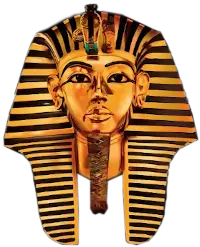
matter, takes us back to the creation story of the Memphite Theology of the Egyptians, in which Chaos is represented by the Primeval Ocean Nun, out of which there arose the Primeval Hill Ta-tjenen. Under these circumstances we cannot give Aristotle credit for the authorship of this doctrine.
In addition to the false authorship that has been attributed to Aristotle, he contradicts himself in his physics VIII 1. 25; when he also speaks of the world as caused. A thing cannot be eternal and infinite, and at the same time finite.
(Memphite Theology in Egyptian Religion by Frankfort p. 20).
(Intellectual Adventure of Man by Frankfort p. 10, 21, 52).
4. The doctrine of the attributes of nature.
Aristotle defines nature as that which possesses the principle of motion and rest and also adds that the motion is an effort to move from the less perfect to the more perfect by a definite law: supposedly what we would today call evolution.
As we examine this definition, we find that Aristotle has only applied the principle of opposites to explain one of the modes by which nature has revealed herself just as he has done in his attempt to explain Being in the dual terms of actuality and potentiality.
But change and motion, permanence and rest, were by no means new problems at the time of Aristotle; since they appear to have been investigated not only by Parmenides, Zeno and Melissus, but also by Democritus, who stressed the notion of permanence in his famous dictum: ex nihillo nihil fit (out of nothing, nothing comes) implying thereby that nature is permanent and eternal.
Similarly, his reference to nature's movement from the less perfect to the more perfect, was by no means a new discovery of a principle of nature.
The creation account found in the first chapter of Genesis speaks of the gradual development of life, in which the Demiurge or Logos was engaged at work during six stages and
Topics
Greek Philospohy is Stolen Egyptian Philosophy
The Memphite Theology is the Basis of all Important Doctrines of Greek Philosophy
Greek Philosophy was Alien to the Greeks
Greek Philosophy was the offspring of the Egyptian Mystery System
The Egyptians Educated the Greeks
The Curriculum of the Egyptian Mystery System
The Pre-Socratic Philosophers and the teaching Ascribed to them
The Athenian Philosophers
1. Socrates
2. Plato
3. Aristotle